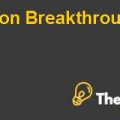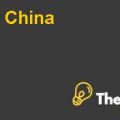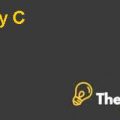
H J Heinz Estimating Cost of Capital in Uncertain Times
What is the WACC and why is it important to estimate a firm’s cost of capital
Weighted Average Cost of Capital measures the financing cost of the company in which each source of finance is weighted according to their proportions like common stock, preferred stock, each type of bank loans and bonds etc. All these costs form the total weighted average capital of the firm, which determines the average rate of return of investors.
It is important for both debt and equity investors and for the company as well as it is a widely acceptable financial tool for measuring the rate of return of investors. It helps investors in order to determine their optimum rate of return and it also helps companies in order to evaluate the projects that either it is generating high or low return with respect to the rate of return of investors. This means it also measures the minimum return that the company should return in order to meet the obligation of creating value with respect to the investors.
The Yields on the Two Representative Outstanding Heinz-Debt Issues as Of the End of April 2010 and One Year Earlier
Heinz has two outstanding debts; one is due in the year 2032 with a coupon rate of 6.75% and second one is due in 2012 with a coupon rate of 6.625%.The yield on both outstanding debt can be calculated by dividing the coupon rate with the current market value of the debt. On April 2010, the yield upon both bonds wa scalculated which was 6.6% on bond whose coupon rate was6.75% and 3.4% on bond whose coupon rate was6.625%. In the year 2009, itwas 6.9% on bond whose coupon rate was6.75% and 3% on bond whose coupon rate was6.625%.
Firstly, the cost of equity is calculated for both years for this purpose with the help of capital asset pricing model. For the year 2010, the market risk premium is assumed to be 8% and risk free rate is taken from the year 2010 30 years yield of capital market data, which is 4.53% for both years and for the year 2009 the market risk premium is assumed as 7.5%. By considering Kraft Company as a comparable company, its Beta is taken for both years for cost of equity calculation. By putting the value of Beta, the risk free rate and market risk premium into the CAPM formula the cost of equity is calculated, which is 10.4% for the year 2010 and 9.7% for the year 2009.
After calculating the cost of equity, the cost of debt is identified. For this purpose, the cost of debt is taken from the debt yield from the coupon bond of 6.75%. By putting the values after tax cost of debt, cost of equity, value of debt and value of equity into the WACC formula the weighted average cost of capital for both years is identified, which is 8.9% for the year 2009 and 9.7% for the year 2010. The value of equity for this purpose is calculated by multiplying the outstanding shares of each year with the share price of that year. While the value of debt for this purpose is calculated by multiplying the total book value of 6.75% coupon bond with its present market values, which is $91.4 for the year 2009 and $116.9 for the year 2010. The book value of the debt for each year is found from the balance sheet for each respective year.
WACC for Kraft Foods, Campbell Soup Company, and Del Monte Foods and Their Influence
WACC for each company is calculated with the same procedures as for Heinz. Firstly, the cost of equity is calculated with the help of CAPM formula. For this purpose, the beta of each company is used which is given in the case. Same market risk premium and risk free rate is used for each company as of Heinz.................................
This is just a sample partial case solution. Please place the order on the website to order your own originally done case solution.













